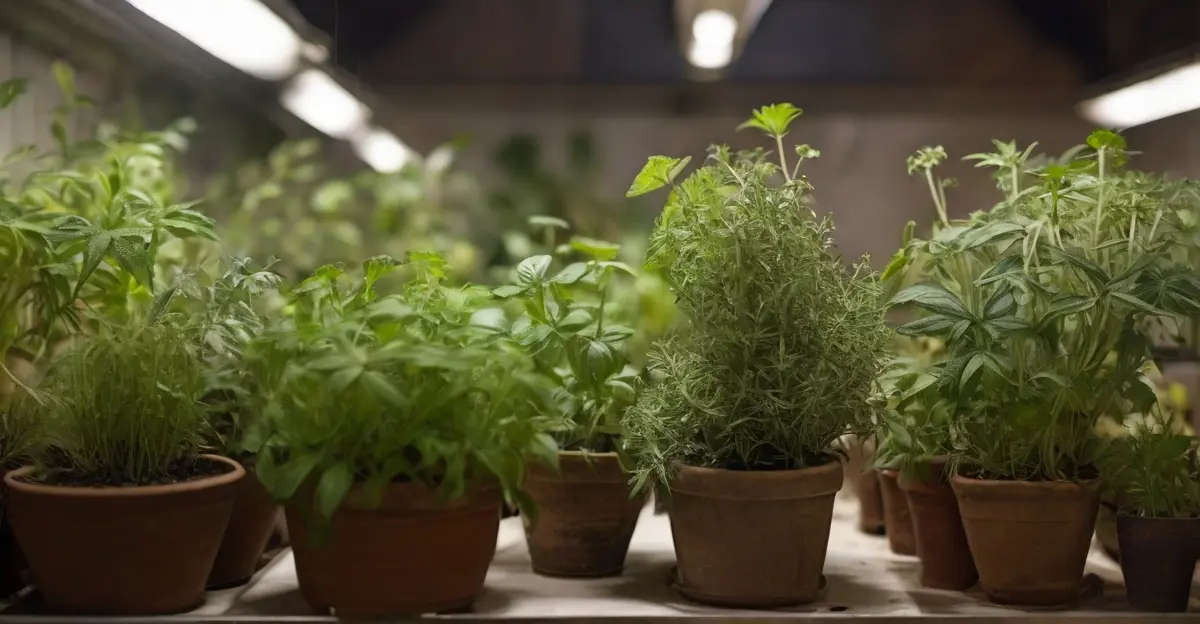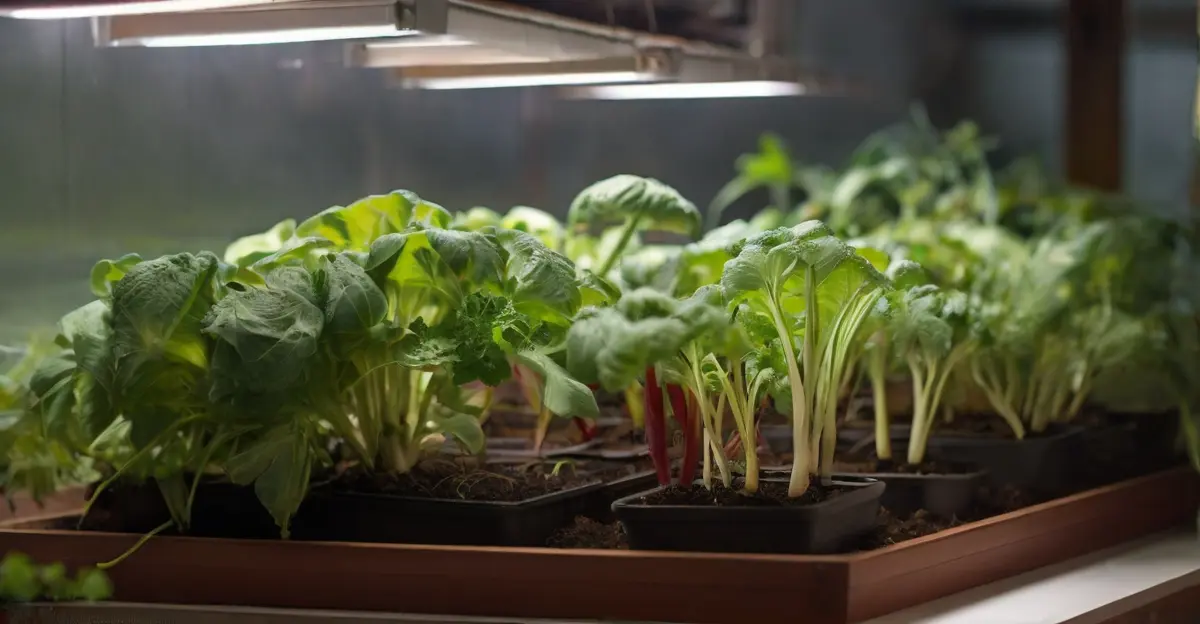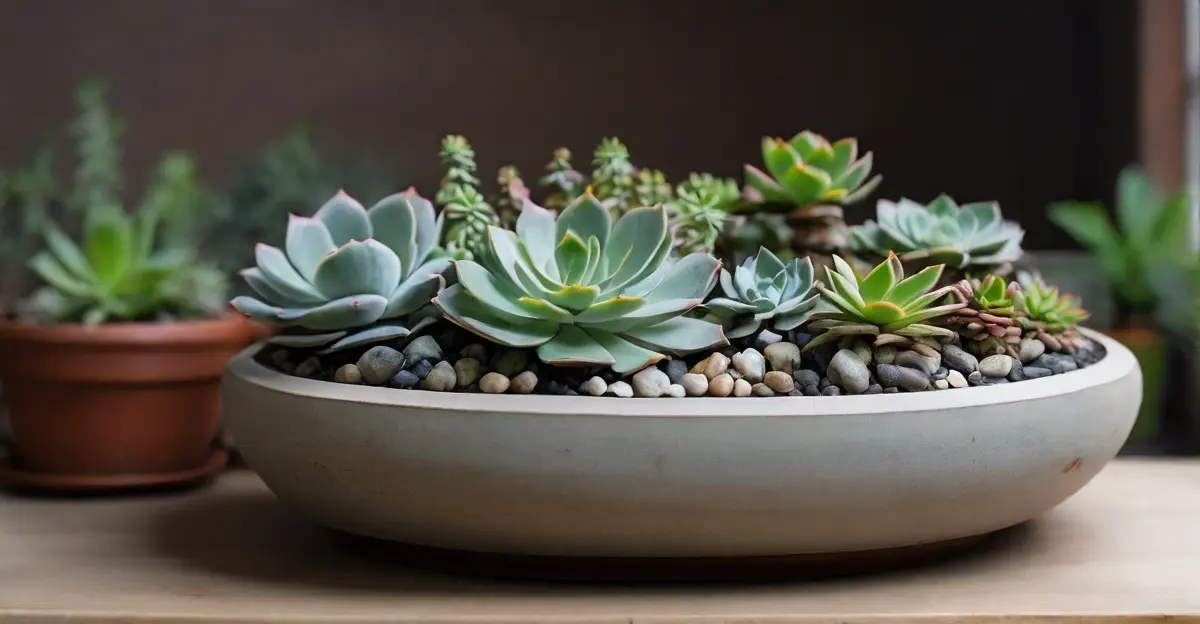What Color Light Is Worst for Plant Growth (2024 Updated)

Green light is often considered the least useful light color for plant growth among indoor farming experts. However, it does have some benefits.
This blog post explores why green light is bad, in which cases can it be good, and what to use instead when it becomes bad.
TL;DR Summary
The Worst Color Light for Plants
An overview of research comparing plant growth rates under different colored lights shows green light results in reduced metrics across the board.
Multiple studies found plants grown under green light had:
Compared to optimal red/blue light conditions.
For example, a study on strawberries found that replacing some blue light with green light (up to 20% of the total) benefited strawberry growth, but further increasing green light to 27% was detrimental or comparable to just 6% green light.
Similarly, another study found that adding some green light generally enhanced growth and phytochemical content in microgreens and edible flowers. Very high proportions of green light (25-44%) reversed some beneficial effects.
This is because green wavelengths are absorbed the least efficiently by plant chlorophylls and photosystems. So less photosynthesis and growth signaling occurs under green light.
Green light often makes plants behave as if growing in poor, shady conditions—stunting their development (source).
You now know that green light is not that great for plant growth, but it has its supplementary use. Let’s further explore by examining how green light impacts specific types of indoor plants.
Impacts of Green Light on Common Indoor Plants
| Plant Type | Impact of Green Light |
| Herbs | Promotes growth and medicinal compound production in some species like lemon balm. Effects vary by species. |
| Vegetables | Positive impacts are documented in some species, but effects vary significantly even within species. May improve phytochemical content. |
| Houseplants | Too much green light can cause elongated stems and abnormal growth. Up to 25% green light may be substituted for blue without issues. |
| Succulents | Less impact than red/blue light. Enables better light penetration into tissues but too much causes issues. |
| Flowers | Generally less impact than other wavelengths. Effects vary greatly by species. |
A. Herbs

Green light can have positive impacts on the growth and development of some herbs.
For example, green light promoted greater accumulation of the medicinal compound rutin in Physalis angulata seedlings compared to other light colors.
It also led to higher biomass and essential oil yields in lemon balm (Melissa officinalis) compared to blue or red light alone.
However, the impacts of green light seem to depend on the specific herb species.
For tomato and lettuce seedlings, adding green light did not improve growth compared to red + blue light (source, source).
Additionally, lettuce and ornamental plants grown under blue + green light were shorter and had reduced leaf expansion compared to red + blue light (source).
B. Vegetables

For vegetables like tomatoes and lettuce, the effects of green light vary.
One study found that increasing green light promoted growth in tomatoes, but not in lettuce or cucumbers.
In contrast, another study found minimal differences in radish, soybean, lettuce, and wheat grown under different percentages of blue (0-30%) and green light (0-30%) at a low photosynthetic photon flux (200 μmol m-2 s-1).
While some studies show the benefits of green light for lettuce, basil, rice, and other plants, the effects can differ significantly for different genotypes even within the same species.
Red leaf lettuce, for example, had reduced growth under UV-A light while green leaf lettuce did not (source).
Green light may stimulate the production of certain phytochemicals and antioxidants like:
This enhances the nutritional quality of some vegetables (source).
However, more research is needed to determine optimal green light intensities and treatment durations to maximize phytochemical content.
IMPORTANT: Post-harvest storage of lettuce and other leafy greens under green LEDs or fluorescent lighting for 12–24 hours can help reduce nitrate content and increase antioxidants like vitamin C compared to storage in darkness. This can potentially improve shelf-life and safety.
C. Houseplants

For houseplants, there is limited research on the impacts of green light specifically.
However, most houseplants grow well under full-spectrum white light or a combination of red and blue light according to indoor plant experts.
Too much green light may result in elongated stems and abnormal growth.
One source found that 25% green light could substitute for 25% blue light without causing elongated growth. However, too much green light (more than 50%) did cause taller plants in that study.
KEY TAKE HOME: Green light penetrates deeper into the plant canopy, which could theoretically promote more growth in lower leaves. However large amounts of green light may cause some abnormal or elongated growth in houseplants.
D. Succulents

Green light generally has less impact on photosynthesis and growth compared to red and blue light in most plants, including succulents.
High proportions of green light (25-44%) combined with red and blue can negatively impact the growth and accumulation of valuable compounds in some species by reversing blue/red light responses.
However, green light enables deeper penetration into leaf and stem tissues compared to red and blue wavelengths. This allows better light distribution in thick or succulent tissues (source).
In some Crassulacean acid metabolism (CAM) succulent plants, green tissues on the stem or fruit may contribute to photosynthesis and carbon gain, especially when leaves are not present (source).
There is variation between succulent species in their response to different light wavelengths. More research is needed on the impacts of green light, especially for commercially grown succulents and cacti.
KEY TAKE HOME: When growing succulents indoors, the inclusion of some green wavelengths along with higher proportions of red and blue is recommended for balanced growth. However, avoid very high green light percentages.
E. Flowers

Green light generally has less of an impact on flowering and growth compared to other wavelengths like red and blue light.
However, as always, adding green light to a combination of red and blue LEDs can sometimes improve growth metrics like plant height and leaf size.
The effects of green light depend on the specific plant species.
For example, green light delayed flowering in some strawberry cultivars but not others (source). Similarly, green filters did not affect flower emergence in some chrysanthemum varieties but did in other varieties (source).
In terms of flower pigments, green light generally does not impact anthocyanin production like red and blue light do. So green light is less likely to alter flower color compared to other wavelengths (source).
Better Alternatives to Green Light
Now that we understand why excessive green light can be detrimental to plants, let’s explore smarter options for optimal growth.
The good news?
Plenty of lighting solutions can help your indoor plants thrive without disrupting processes as we see with too many green spectra.
I’ll break down specifics on superior LED and grow light alternatives here:
Full Spectrum White LEDs
Full spectrum LED grow lights provide a balanced serving of blue, red, and warm white light to mimic natural sunlight.
They supply roughly equal proportions of critical red and blue peaks for photosynthesis while filling gaps with wide spectral coverage across green, yellow, and other wavelengths.
Experts consider full spectrum lighting the most versatile, all-around choice for enabling healthy indoor plant growth from seed to harvest.
SIDENOTE: Aim for full spectrum LEDs with a brightness of 2,000-5,000 lumens and a color temperature ranging from 3000K up to 4000K.
Blue-Biased LED Grow Lights
Blue light LEDs focus more on wavelengths from 400-500 nm to boost expansive leafy growth.
They provide peak activation of helpful plant photoreceptors and chloroplast production for happy herbs and lettuces.
Look for plant growth lights described as “cool white” or with color temperatures from 5000K-6500K for ideal blue light coverage.
PRO TIP: LEDs with around 80% blue spectra work best for leafy greens, while still including some red peaks.
Red + Blue Combined Lighting
As an alternative to green-heavy or broad-spectrum white light, pairing red and blue LEDs lets you customize ratios based on the crop.
While the ideal red:blue balance depends on factors like plant variety and growth stage, a typical starting point is 80% red & 20% blue wavelengths.
Red peaks from 600-700 nm activate flowering and fruit production while blue regulates leaf expansion—ensuring complete coverage.
Again, don’t hesitate to experiment with adjusting the spectrum balance as plants mature!
For next-level plant growth hacking, be sure to check out our comprehensive guide breaking down the best color light for plant growth.
Conclusion
While green light isn’t entirely useless for plants, research clearly shows too much green spectrum leads to stunted growth across most species.
For optimal results, full-spectrum white LEDs or adjustable combinations of red and blue peaks better mimic natural sunlight.
Hopefully now you feel empowered & ready to upgrade your own indoor lighting setup!
With that said, let the light guide you…right to your dream harvest!
FURTHER READING: How to Use a Grow Light for Indoor Plants: No-Nonsense Guide
Meet your guide
Dhruvir Zala